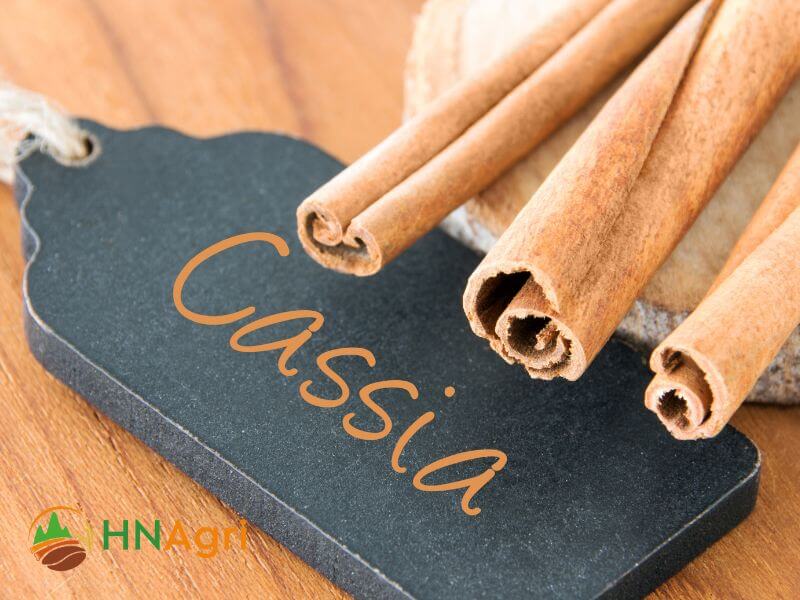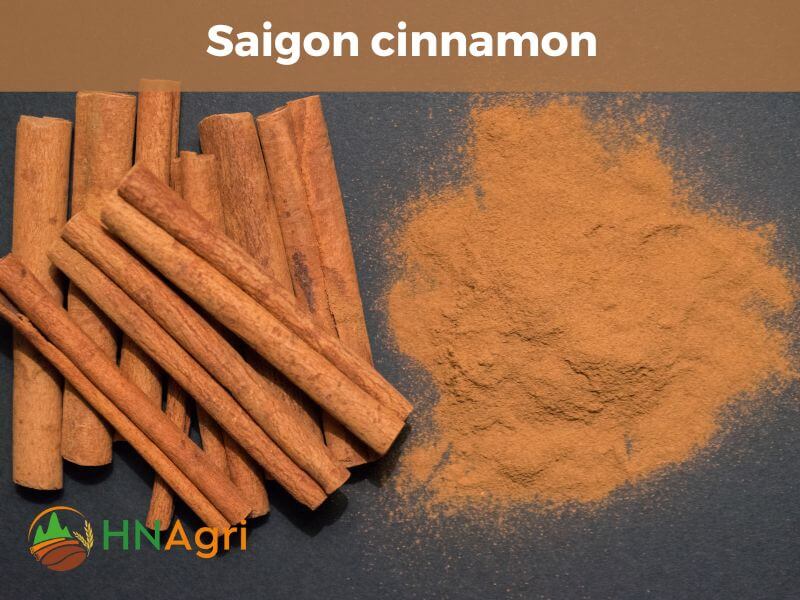Cinnamon is a versatile spice that can add warmth and flavor to a variety of dishes. But did you know that there are 4 types of cinnamon, each with its own unique flavor profile? In this blog post, we’ll explore the different types of cinnamon and discuss their flavor, benefits and how to use them to enhance your cooking.
Table of contents
Introduction to the Fascinating World of Cinnamon
Cinnamon is one of the most popular spices in the world, and for good reason. It has a warm, sweet flavor that can enhance a variety of dishes, from sweet desserts to savory stews. But cinnamon is more than just a delicious spice. It also has a rich history and a variety of other uses.
Cinnamon is made from the inner bark of the cinnamon tree, which is native to Southeast Asia. The bark is dried and rolled into sticks, which are then ground into powder. Cinnamon has been used for centuries in traditional medicine, and it is still prized for its potential health benefits today.
In addition to its culinary and medicinal uses, cinnamon is also used in a variety of other products, including perfumes, cosmetics, and soaps. There are four main types of cinnamon: Ceylon, cassia, Saigon, and Korintje. Each type has its own unique flavor profile. Let’s discover 4 types of cinnamon in the below part.
Getting to Know the 4 Types of Cinnamon
There are four main types of cinnamon: Ceylon cinnamon, cassia cinnamon, Saigon cinnamon, and Korintje cinnamon. Each type has its own unique flavor, aroma, and appearance. Let’s learn in the below part.
Profiling Ceylon Cinnamon: A True Cinnamon Variety
Ceylon cinnamon, also known as true cinnamon, is a spice made from the inner bark of the Cinnamomum verum tree. It is native to Sri Lanka and southern parts of India, and has been prized for its culinary and medicinal properties for centuries.
Ceylon cinnamon has a delicate, sweet flavor and aroma. It is lighter in color and more fragile than other types of cinnamon, such as cassia cinnamon. Ceylon cinnamon is also lower in coumarin, a compound that can be toxic if consumed in high doses.
Ceylon cinnamon is a versatile spice that can be used in a variety of dishes, both sweet and savory. It is a popular ingredient in baked goods, such as cinnamon rolls, pies, and cakes. It is also used in curries, stews, and other savory dishes.

Exploring the Taste and Benefits of Cassia Cinnamon
Cassia cinnamon, also known as Chinese cinnamon, is the most common type of cinnamon found in supermarkets. It is made from the inner bark of the Cinnamomum cassia tree, which is native to China and Southeast Asia.
Cassia cinnamon has a strong, spicy flavor and aroma. It is darker in color and thicker than Ceylon cinnamon. Cassia cinnamon is also higher in coumarin, a compound that can be toxic if consumed in high doses.
Despite its high coumarin content, cassia cinnamon is still a popular spice. It is used in a variety of dishes, both sweet and savory. Cassia cinnamon is a popular ingredient in baked goods, such as cinnamon rolls, pies, and cakes. It is also used in curries, stews, and other savory dishes.

Decoding the Charm of Saigon Cinnamon
Saigon cinnamon, also known as Vietnamese cinnamon, is a type of cassia cinnamon that is native to Vietnam. It is prized for its unique flavor and aroma, which is said to be more delicate and complex than other types of cinnamon.
Saigon cinnamon has a long history in Vietnamese culture and cuisine. It is used in a variety of dishes, including savory dishes like pho and banh mi, as well as sweet dishes like che (Vietnamese desserts). Saigon cinnamon is also used in traditional medicine and aromatherapy.
Here are some of the reasons why Saigon cinnamon is so popular:
- Flavor and aroma: Saigon cinnamon has a unique flavor and aroma that is said to be more delicate and complex than other types of cinnamon. Saigon cinnamon taste is described as having a warm, sweet flavor with hints of spice and vanilla.
- Versatility: Saigon cinnamon can be used in a variety of dishes, both sweet and savory. It is a popular ingredient in Vietnamese cuisine, but it can also be used in other cuisines, such as Mexican, Indian, and Thai.
- Health benefits: Saigon cinnamon is said to have a number of health benefits, including regulating blood sugar levels, improving cholesterol levels, and protecting against heart disease. It has also been shown to have anti-inflammatory and antioxidant properties.
If you are looking for a unique and flavorful cinnamon, Saigon cinnamon is a great option to try. It is a versatile spice that can be used in a variety of dishes and has a number of potential health benefits.

Spotlight on Korintje Cinnamon: The Asian Favorite
Korintje cinnamon is a type of cassia cinnamon that is native to the Korintje highlands of Sumatra, Indonesia. It is prized for its delicate flavor and aroma, which is said to be less spicy and more complex than other types of cassia cinnamon. Korintje cinnamon is also lower in coumarin, a compound that can be toxic if consumed in high doses.
Korintje cinnamon is a popular spice in Asian cuisine, and it is used in a variety of dishes, both sweet and savory. It is a popular ingredient in curries, stews, and other savory dishes, as well as in sweet dishes like cakes, pastries, and desserts. Korintje cinnamon is also used in traditional medicine and aromatherapy.

How to Identify Different 4 Types of Cinnamon
There are a few ways to identify different 4 types of cinnamon:
- Appearance: Ceylon cinnamon is lighter in color and has a more delicate texture than other types of cinnamon. Cassia cinnamon is darker in color and has a thicker texture. Saigon cinnamon has a reddish-brown color and a single, inward curl. Korintje cinnamon has a light brown color and is often sold in sticks.
- Taste: Ceylon cinnamon has a delicate, sweet flavor. Cassia cinnamon has a stronger, spicier flavor. Saigon cinnamon has a complex flavor that is both sweet and spicy. Korintje cinnamon has a delicate, sweet flavor that is similar to Ceylon cinnamon.
- Aroma: Ceylon cinnamon has a light, floral aroma. Cassia cinnamon has a stronger, more pungent aroma. Saigon cinnamon has a strong, complex aroma. Korintje cinnamon has a delicate, sweet aroma.
If you are unsure which type of cinnamon you have, you can try grinding a small amount and tasting it. You can also try steeping a cinnamon stick in hot water and tasting the liquid.
Here are some additional tips for identifying different 4 types of cinnamon:
- Ceylon cinnamon: Ceylon cinnamon is often sold in thin, delicate sticks that are rolled up like cigars. It is also sometimes sold in ground form.
- Cassia cinnamon: Cassia cinnamon is often sold in thick sticks that have a single, inward curl. It is also sometimes sold in ground form.
- Saigon cinnamon: Saigon cinnamon is often sold in thick sticks that have a reddish-brown color. It is also sometimes sold in ground form.
- Korintje cinnamon: Korintje cinnamon is often sold in thin, delicate sticks that are similar to Ceylon cinnamon sticks. It is also sometimes sold in ground form.
If you are still unsure which type of cinnamon you have, you can contact the manufacturer or retailer for more information.
Using 4 Different Types of Cinnamon in Cooking and Baking
Different 4 types of cinnamon have different flavor profiles, so it’s important to choose the right one for your dish. Here are some tips:
- Ceylon cinnamon: Ceylon cinnamon is the most delicate and mild of the four types of cinnamon. It has a slightly sweet, floral flavor. Ceylon cinnamon is a good choice for baking, especially for desserts like pies, cakes, and pastries. It can also be used in savory dishes, such as curries and stews.
- Cassia cinnamon: Cassia cinnamon is the most common type of cinnamon found in supermarkets. It has a stronger, spicier flavor than Ceylon cinnamon. Cassia cinnamon is a good choice for baked goods, such as cookies and muffins. It can also be used in savory dishes, such as chili and tagines.
- Saigon cinnamon: Saigon cinnamon is a type of cassia cinnamon that is native to Vietnam. It has a complex flavor that is both sweet and spicy. Saigon cinnamon is a good choice for dishes where you want a complex flavor and aroma, such as pho and banh mi.
- Korintje cinnamon: Korintje cinnamon is another type of cassia cinnamon that is native to Indonesia. It has a delicate, sweet flavor that is similar to Ceylon cinnamon. Korintje cinnamon is a good choice for dishes where you want a delicate flavor and are concerned about the coumarin content, such as cinnamon rolls and cinnamon tea.
Here are some specific examples of how to use different varieties of cinnamon in cooking and baking:
- Ceylon cinnamon:
- Add to apple pie or crumble for a sweet and spicy flavor.
- Use in pumpkin spice latte for a cozy and autumnal drink.
- Sprinkle on oatmeal or yogurt for a healthy and flavorful breakfast.
- Cassia cinnamon:
- Add to gingerbread cookies for a classic holiday flavor.
- Use in cinnamon rolls for a sweet and sticky breakfast.
- Sprinkle on chili powder for a warm and spicy seasoning.
- Saigon cinnamon:
- Add to pho broth for a complex and aromatic flavor.
- Use in banh mi sandwiches for a spicy and savory kick.
- Sprinkle on grilled pineapple for a sweet and smoky treat.
- Korintje cinnamon:
- Add to cinnamon rolls for a delicate and flavorful breakfast.
- Use in cinnamon tea for a soothing and relaxing drink.
- Sprinkle on fruit salad for a sweet and healthy dessert.
No matter which type of cinnamon you choose, be sure to grind it fresh for the best flavor. Cinnamon sticks can also be used, but they will need to be steeped in liquid for a longer period of time to extract the flavor.
Experiment with different varieties of cinnamon to find your favorites and to add unique flavors to your cooking and baking.






